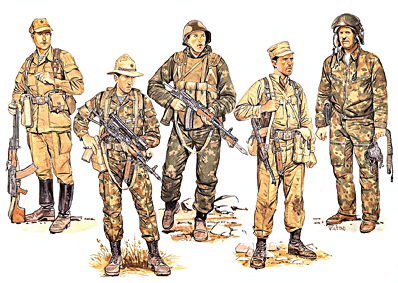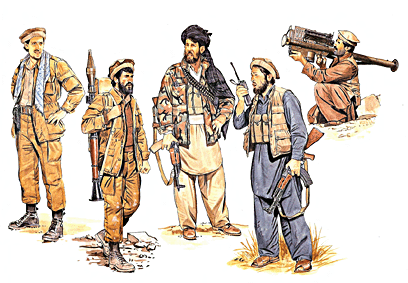

The war in Afghanistan was the high water mark of the Soviet Empire. In 1978, when the war started, the Soviet Union was at the height of its Brezhnev-era confidence that the global "correlation of forces' had irrevocably shifted in its favor, that the Soviet Empire - both in eastern Europe and inside their own borders - was secure, and that the West was splic and in decline. When the Soviets invaded in 1979, the Soviet Army, the world's largest mechanized force, seemed likely to mukc short work of the ragged and lightly armed guerillas coming from one of the world's poorest countries.
When the Soviet Army finally pulled its combat troops from Afghanistan on 15 February, 1989 - leaving Moscow's war to be carried on by the Communist regime they installed in Kabul - it was in a different world. The Gorbachev era brought not confidence but questioning a result of economic and political setbacks. The Empire was starting to break down; within a yrar of the withdrawal all of eastern Europe had changed government, unrest spread throughout the Soviet Union and Lithuania moved towards secession, despite Gorbachev's steps towards democracy. The Afghans certainly had a part in this, for just as defeat in the Crimean and Russo-Japanese wars has a great impact on Tsarist Russia, so die failure of th: Soviets to gain military victory over the Afghans appears to have had an equivalent impact on the Soviet Union of the 1990s, regardless of the ultimate nurrome of the war still raging in Afghanistan.
Военные действия в Афганистане с 1979 по 89 год, описание Советских вооруженых сил ограниченного контингента, и повстанцев (душманов). Цветные планшеты с вооружением и униформой.
The War in Afghanistan 1979-1989: The Soviet Empire at High Tide
авторы: By David C. Isby, Ron Volstad
Серия: Firepower Pictorials series 1009
Concord Publications Company
Год издания: 2003
ISBN: 9623610092
язык: English
Страниц: 62 Pages
Формат: PDF
Размер файла: 51.2 mb
=============================








